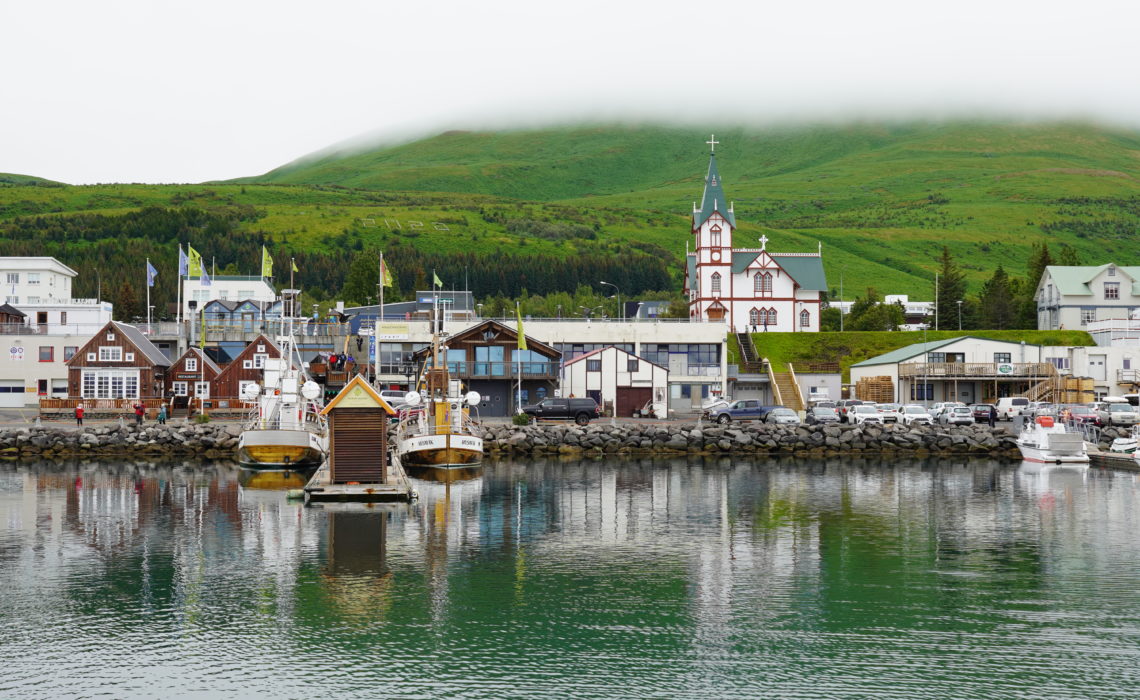
We would not have had the full picture of Iceland, had we not visited the North. From the volcanic landscapes and geothermal hot springs to the remote wilderness of the highlands and Arctic coastline, Northern Iceland, also known as Norðurland, is a destination that rewards those willing to venture beyond the beaten path.
Akureyri
After spending three days in the Capital Region and South Iceland, we headed to the northern part of the country. Wanting to explore as much as possible on our way there, we ended up making a couple of stops at Strokkur and Hveravellir before arriving in Akureyri, where I checked off one of my top bucket-list goals: seeing the northern lights!
Although it has been named the “Capital of North Iceland,” Akureyri is a relatively small town with a population of only 20,000 residents. Due to the low light pollution, this destination is ideal for northern lights hunting. We were nevertheless extremely lucky to see the aurora borealis in the summer, especially because of our short stay in North Iceland and the forecasted foggy weather for most of our stay, in addition to the fact that nights were bright long into the night as the sun never fully sets during the Icelandic summer.
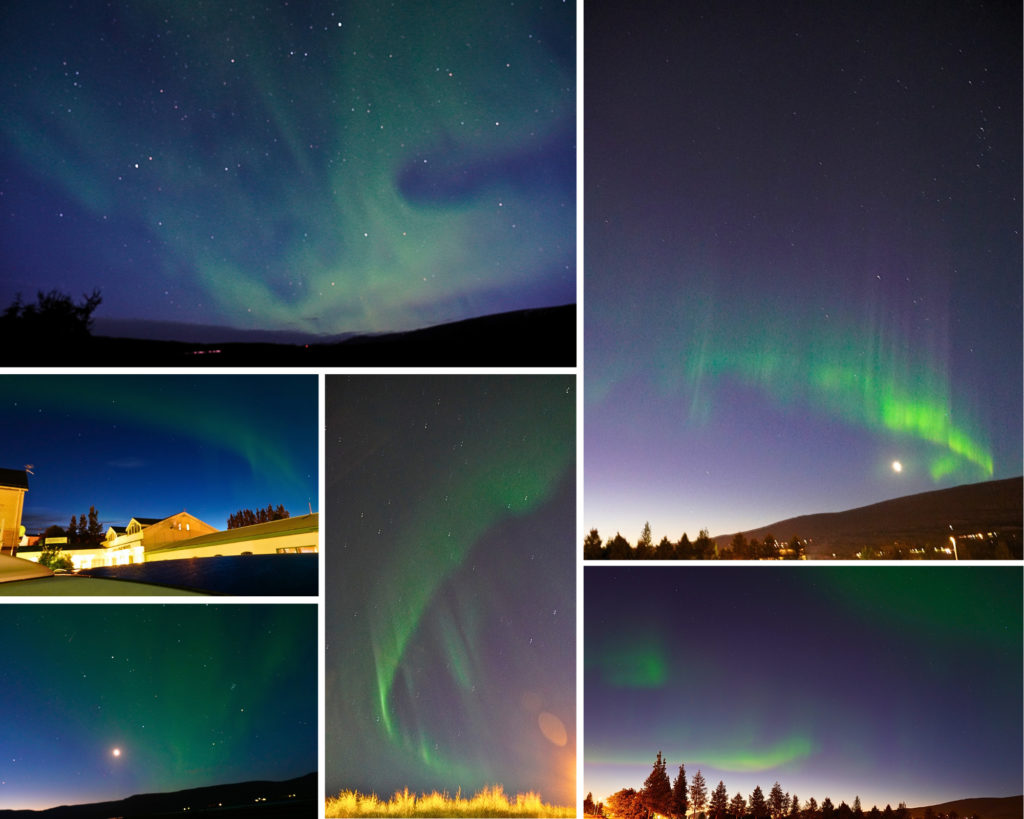
We dropped off our luggage at the hotel we were staying and headed to a nearby location with less light pollution. At first, the lights were more distinct and looked like fluorescent green waves dancing against a dark blue canvas, but they soon spread throughout the sky to what seemed like a teal filter which became harder to discern with bare eyes.
I recently learned that auroras, which appear near both the north and south poles, are the effect of storms on the sun, that cause events such as coronal mass ejections, and solar wind from coronal holes, that send charged particles hurtling across space. When these charged particles from the sun strike atoms and molecules in Earth’s atmosphere, they cause electrons to move to higher-energy orbits, further away from the nucleus. When the electrons move back to a lower-energy orbit, they release particles of light or photons. Now, my new bucket-list objective is to witness this sublime phenomenon again but this time without a camera so I can fully experience it without focusing on capturing the moment through my lens.
Baccalá Bar, Hauganes
On the next day of our trip, we headed to Baccalá Bar in Hauganes, situated on the west bank of Eyjafjordur bay, 25 km from Akureyri, to indulge in a unique culinary experience.
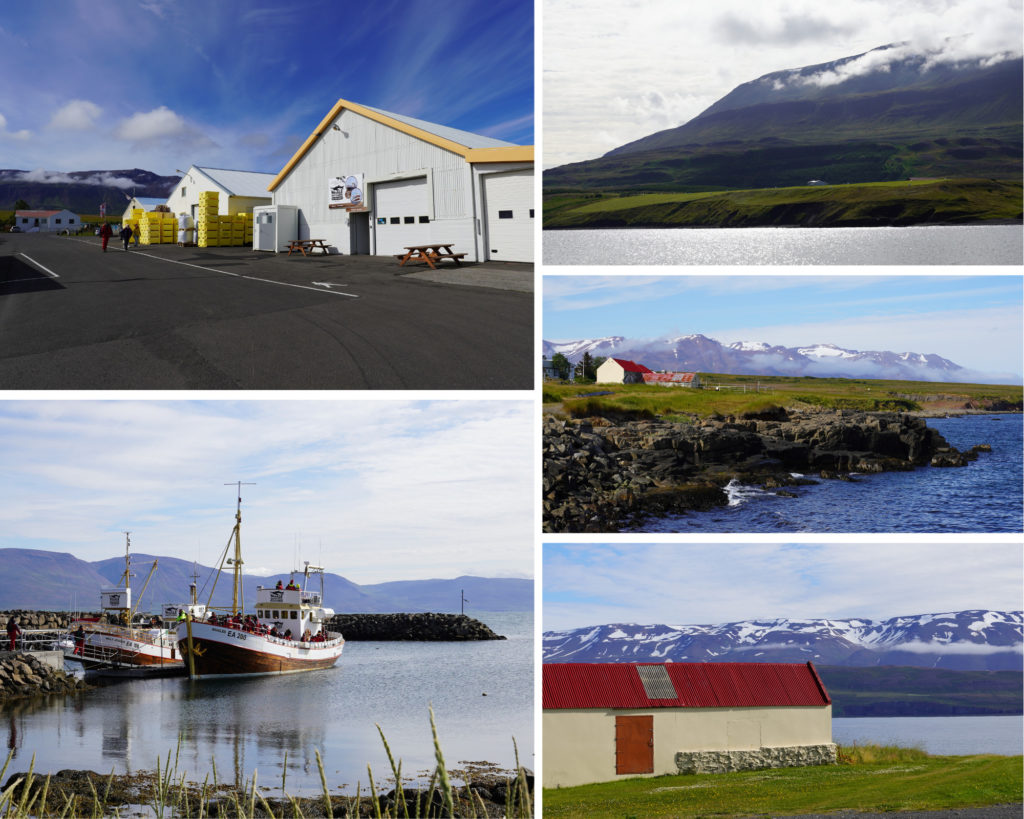
We ordered the most renowned dishes on the menu, including the Baccalá pizza and the fish soup, and decided to be brave enough to sample… rotten shark, which tasted more or less like a mix of garbage, dirty socks, and a corpse (or so I would imagine since I have tried none of the above). To make it more worthwhile, the restaurant ensures that brave patrons, like us, receive a certificate for surviving this experience.
This Icelandic delicacy and one of the small Nordic Island’s national foods is prepared from a certain shark species, which have poisonous flesh due to high content of urea. These sharks basically recycle toxic ammonia to keep their skin moist and prevent it from drying out in salty seawater.
It takes months of fermentation – a process that can be traced back to the Viking age – before the shark can be served for consumption. To wash the flavour down, we were also offered a shot of Brennivin, Iceland’s leading brand of aquavit – a liquor similar to vodka, but with its own distinctive taste; a liquorice-like taste with a mix of caraway and cumin flavour.
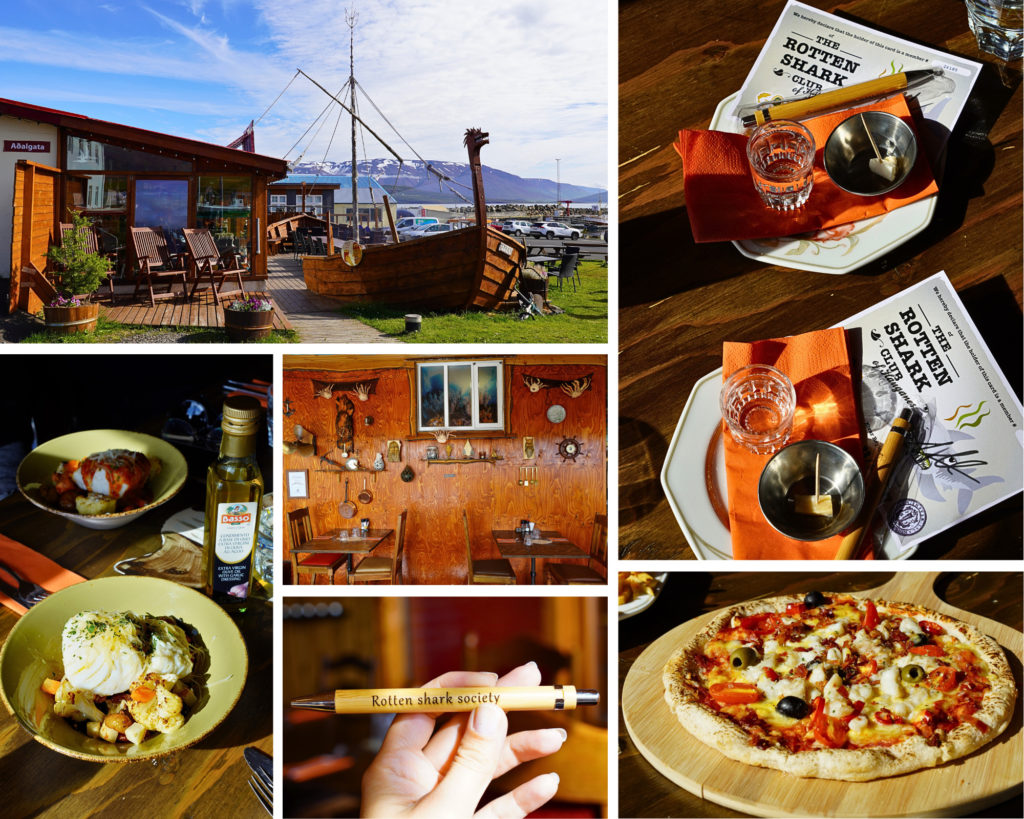
Krafla Lava Fields, Myvatn
Our next stop was Krafla, a volcanic caldera in the Mývatn region. This location sits on the Iceland hotspot atop the Mid-Atlantic Ridge, which forms the divergent boundary between the North American and the Eurasian tectonic plates. We limited our visit to the crater Víti (the Icelandic word for “hell”) and the surrounding area. This crater was formed in 1724 during a massive eruption, which lasted, in its entirety, for five years, and was called the Mývatn Fires. The crater is known for the aqua blue water, whose vivid colours are owed to elements brought up from the geothermal activity in the area.
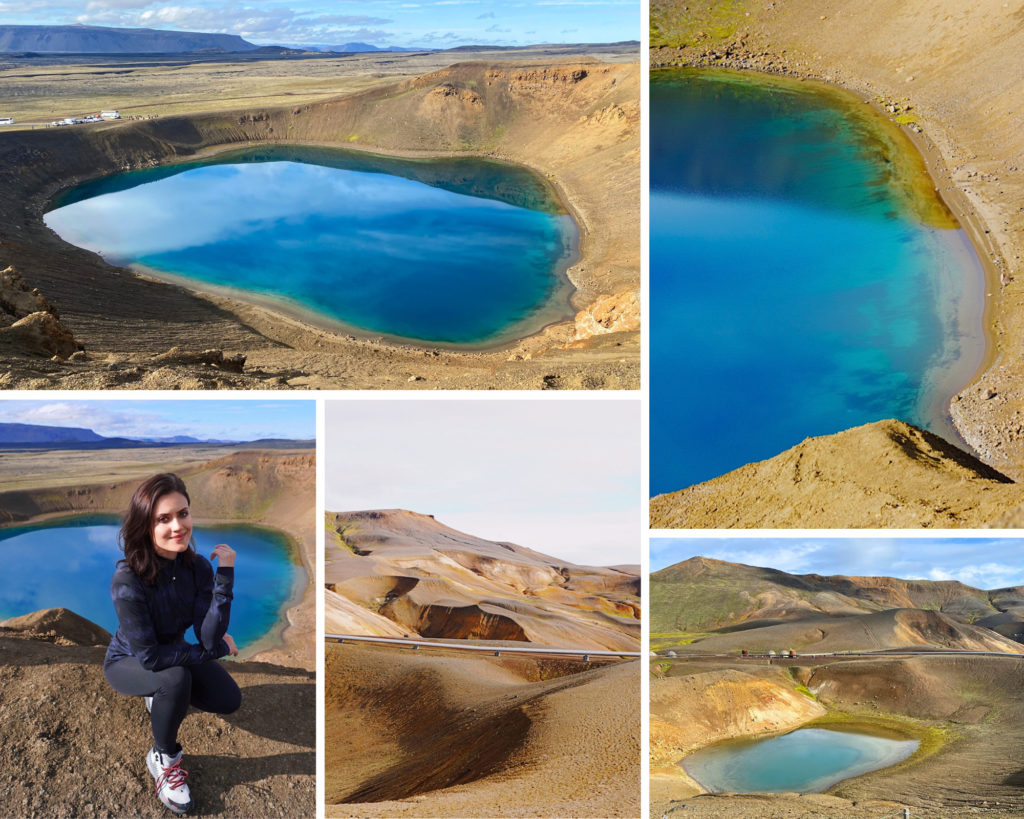
Grjótagjá, Reykjahlíð
Located about 15km southwest of the Viti crater, there is a small lava cave called Grjótagjá. The cave was known to be the home of outlaw Jón Markússon in early the 18th Century. Throughout Iceland’s history, lava caves, characterized by icy, sharp rocks, total darkness, and that inspired tales of trolls, were perfect spots for bandits who had been ostracized from Icelandic society. However, during the decade until 1984, the Krafla volcanic system erupted nine times, making the water in the caves boiling and unusable. The water temperature in combination with the very unpredictable liquid rock just two kilometres under the surface of the earth has led to bathing being prohibited in Grjótagjá. Still, witnessing the reflection of dim light on the lava rocks is a very mystical experience, and being inside the steamy cave lagoon felt like being inside a time capsule.
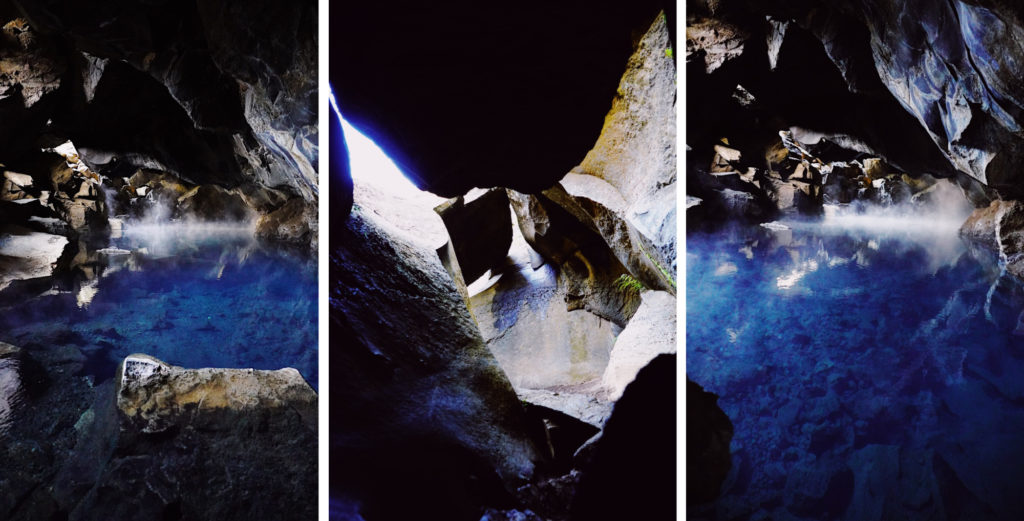
Stuðlagil Canyon, Egilsstadir
On our way to Stuðlagil Canyon, we made a quick stop at Beitarhúsið, a coffeehouse in the wilderness of East Iceland for some coffee and Kleina and Astarpungar Love Balls, which is deep-fried dounats with cardamon, raisins, and vanilla. This coffeehouse, which is literally located in the middle of nowhere and surrounded only by mountains, is furnished completely by wooden sauna-like furniture sparsely covered by sheepskin throws. By the time we arrived, there was no other patron there so we had the place to ourselves.
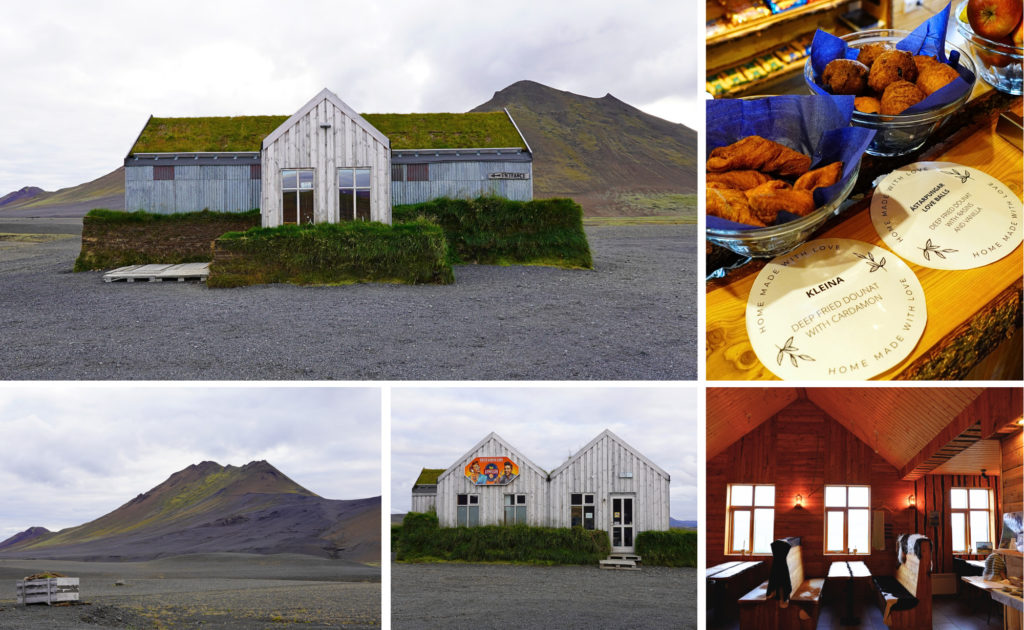
Caffeinated enough, we were back on the road, which included a bumpy ride through F923, also known as Jökuldalsvegur, another famous F road that offered stunning landscapes but required a 4×4 vehicle with significant fording capacity due to a couple of rivers to cross.
We arrived at Studlagil Canyon in the late evening. This canyon is located in East Iceland’s Glacier Valley called Jokuldalur and is famous for its basalt rock columns, similar to the ones found in Reynisfjara black sand beach. Studlagil, however, features the largest number of basalt rock columns in Iceland, and combines this raw breathtaking scenery with a stunning blue-green glacial river and the Studlafoss waterfall, making it as one of Iceland’s hidden gems.
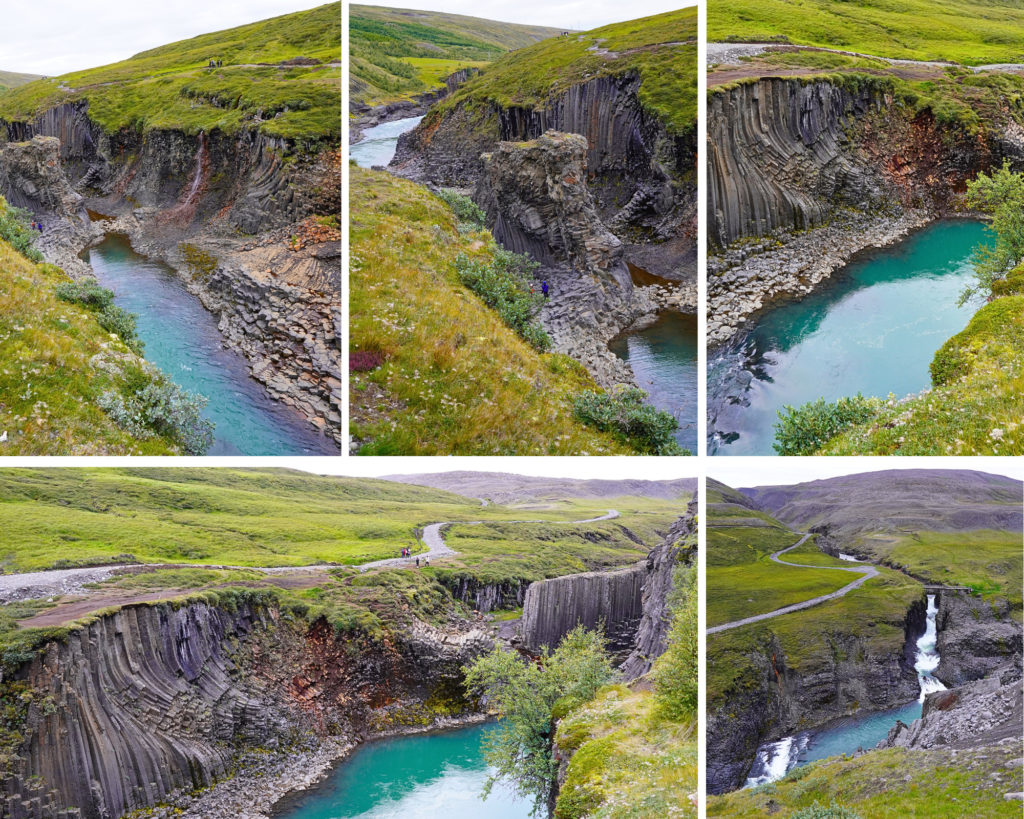
Húsavík Whale Watching
The next day, we woke up very early to head to Húsavík, the Whale Capital of Iceland and the oldest settlement in Iceland. The town is about an hour away northeast of Akureyri and is known for whale watching tours in Skjálfandi Bay.
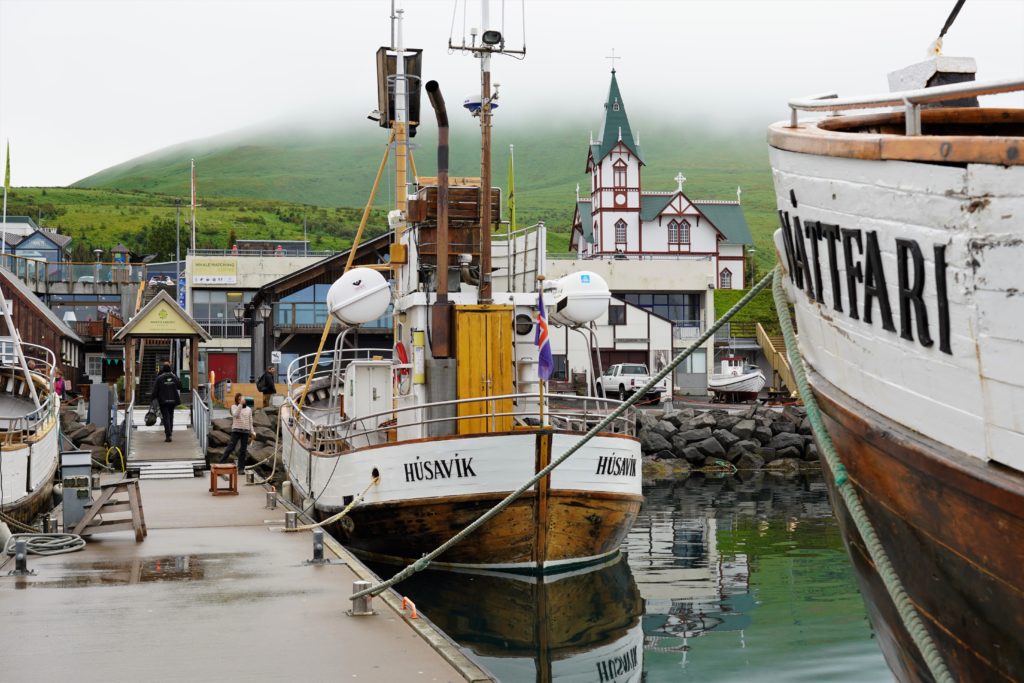
We had booked our Salka whale watching tour weeks before but had to reschedule a couple of days before arriving in Húsavík; hence the early morning spots being the only ones available. We wore the protective gear on top of our winter jackets feeling momentarily like astronauts in size.

The town is beautiful and one can appreciate the colourful harbour even more from the boat as it sails away. The tour lasted about three hours, during which we learned about the different kinds of whales while enjoying a cinnamon bun and hot chocolate. Soon after, we were sailing accompanied by dolphins. Whenever we encountered whales, it felt like everyone on the boat was holding their breath and keeping quiet to not scare them away.
Goðafoss Waterfall
Having seen the Niagara waterfalls way too many times, we didn’t spend more than a few minutes at the Goðafoss waterfall, known as one of Iceland’s most spectacular waterfalls. The water of the river Skjálfandafljót falls from a height of 12 meters over a width of 30 meters.
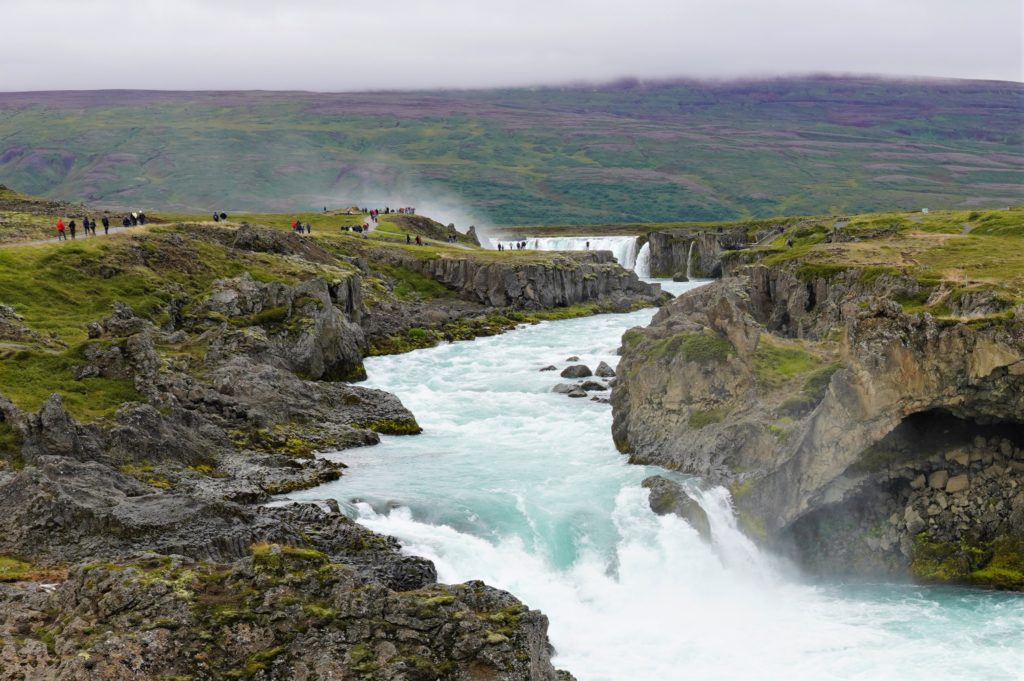
Eyri Restaurant Veitingahús, Hjalteyri
Our last stop in Northern Iceland was at Eyri Restaurant, an off-the-beaten trail restaurant located in Hjalteyri. Eyri Restaurant offers a cozy atmosphere and stunning views of Eyjafjörður.
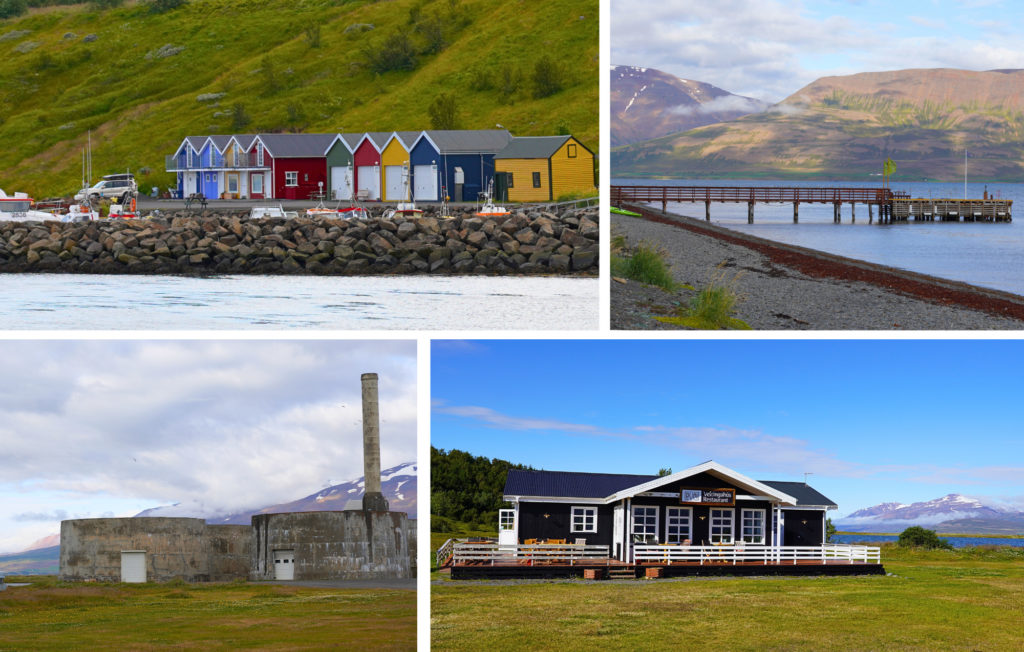
The restaurant specializes in locally sourced food. We ordered a meat board that contained (another) rotten shark sample (because after you try it once, you can’t get enough of it; hope you are sensing the sarcasm). We also tried lamb that was smoked in sheep manure – quite tasty if you ask me.
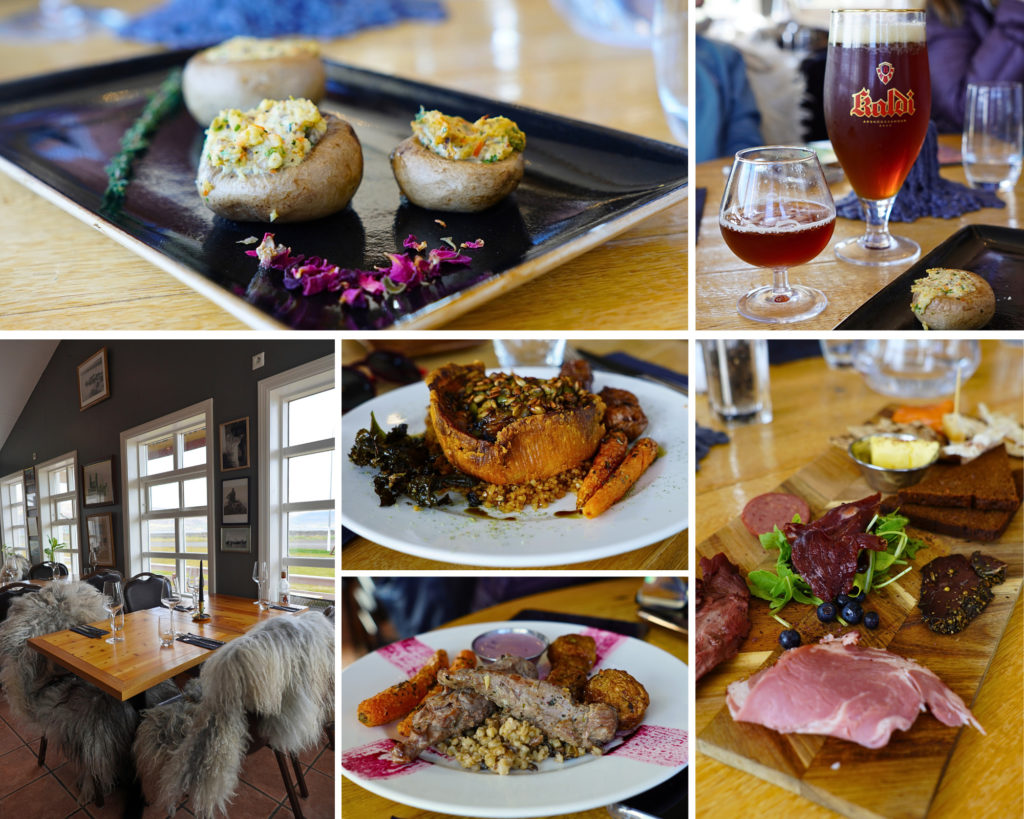
Surprisingly, we met another Greek person who was working at the restaurant and got to learn more about the local lifestyle and hear their recommendations. Since we had very little time ahead of us to explore the area more, we were glad to hear that we had roughly seen most items on the traditional tourist’s list.
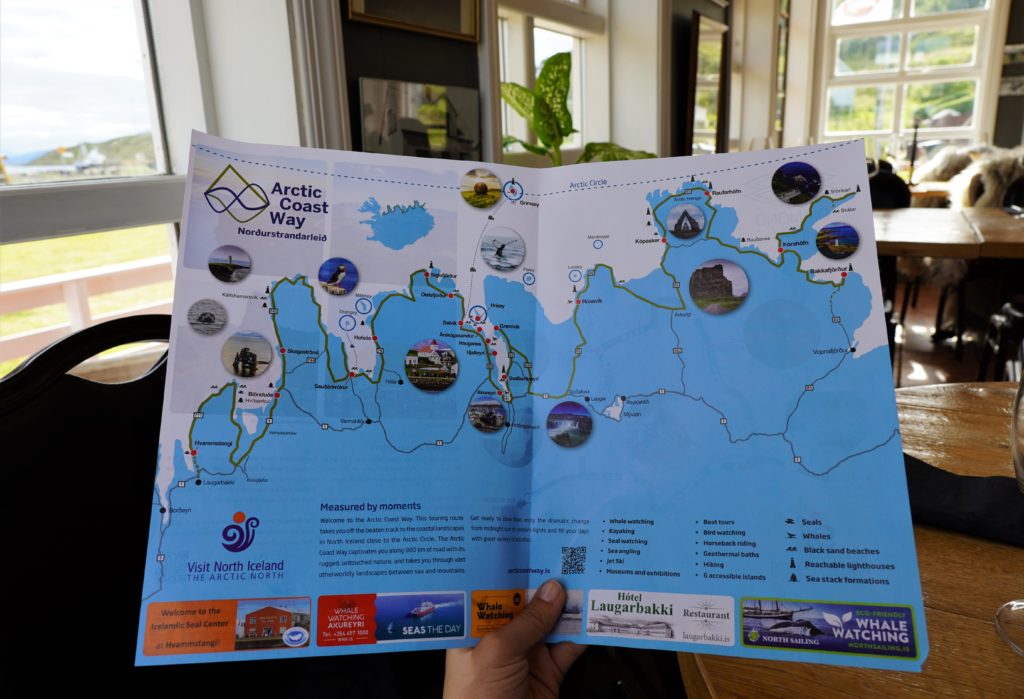
What we did not have the chance to experience, however, was the Bjorbodin (‘Beer Bath’) Spa, which offers visitors the unique opportunity to soak in a relaxing bath of young beer and live beer yeast. Since we had an about seven-hour ride to Reykjavik ahead of us, we thought we’d spare each other the pleasant beer fragrance in a confined space, adding this to the list of the places we want to visit the next time we find ourselves in this breathtaking country.

